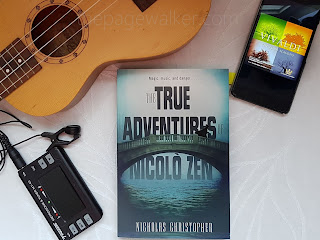It isn't often you receive a letter from the dead. When Vianne Rocher receives a letter from beyond the grave, she has no choice but to follow the wind that blows her back to Lansquenet, the village in south-west France where, eight years ago, she opened up a chocolate shop. But Vianne is completely unprepared for what she finds there. Women veiled in black, the scent of spices and peppermint tea, and there, on the bank of the river Tannes, facing the square little tower of the church of Saint-Jerome like a piece on a chessboard - slender, bone-white and crowned with a silver crescent moon - a minaret. Nor is it only the incomers from North Africa that have brought big changes to the community. Father Reynaud, Vianne's erstwhile adversary, is now disgraced and under threat. Could it be that Vianne is the only one who can save him?
Joanne Harris’ opening lines will get you every time. You will tell yourself, “just a few paragraphs for now”, then, “just this chapter”, but before long you have read a quarter of the book itself. You do not want to put it down. A fact.
We came on the wind of the carnival. A warm wind for February, laden with the hot greasy scents of frying pancakes and sausages and powdery-sweet waffles cooked on the hotplate right there by the roadside, with the confetti sleeting down collars and cuffs and rolling in the gutters like an idiot antidote to winter. - Chocolat (#1)
It is a relatively little-known fact that, over the course of a single year, about twenty million letters are delivered to the dead. - The Girl With No Shadow (#2)
Someone once told me that, in France alone, a quarter of a million letters are delivered every year to the dead. What she didn’t tell me is that sometimes the dead write back. - Peaches for Monsieur Le Curé (#3)
If I may venture to say, Harris is a conjurer. She conjures words. They are so delectable, I want to enjoy every bit of them. She conjures people, the kind you are so enthralled with, you want to follow them around and eager to find out what will happen next. She conjures the most intriguing place, Lansquenet-sous-Tannes, I cannot find it in any map, but welcomes me every time I open a Chocolat book.
As with its prequels, not everything is what it seems in PEACHES FOR MONSIEUR LE CURÉ. They are about perceptions versus the heart of things. Harris had been extra brave with this one. The book tackles the sensitive, but relevant issues of religion, race, and gender. It highlights how people can twist religion to their advantage; how self-righteousness and position create disparity and oppression, mostly on women; and, reminds us that Christianity is not about the comparison of religion, but abounding inclusion.
Lastly, this book is about food and how it crosses the divide – by sharing cultures and heritage - the most binding thing in any community around the world. And love, of course, above all, is love.
There will always be a space in my heart for this series.
Book details:
Title: Peaches for Monsieur Le Cure
Publication: May 24th, 2012, Doubleday
Genre: Fiction, Magical Realism
Rating: ★★★★★































